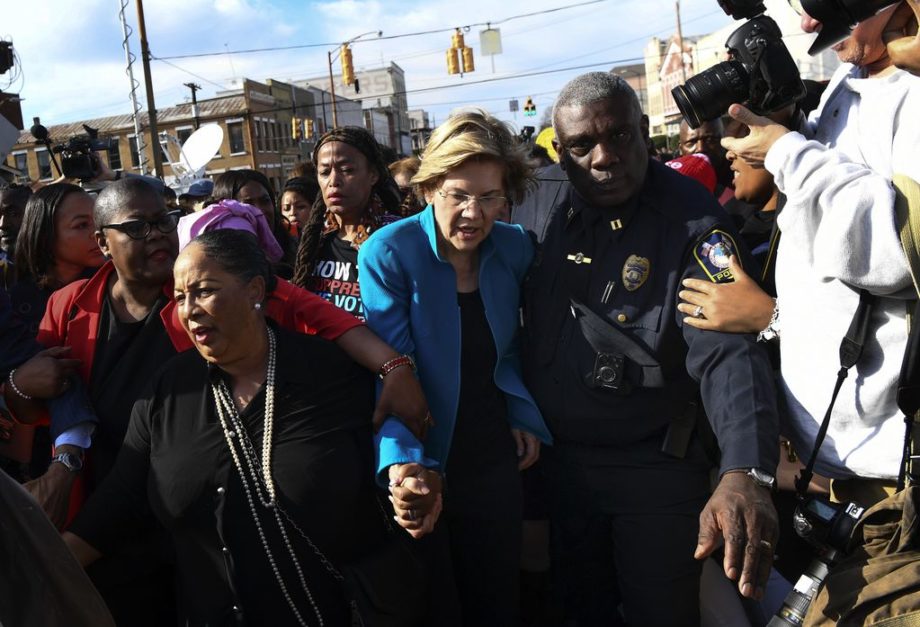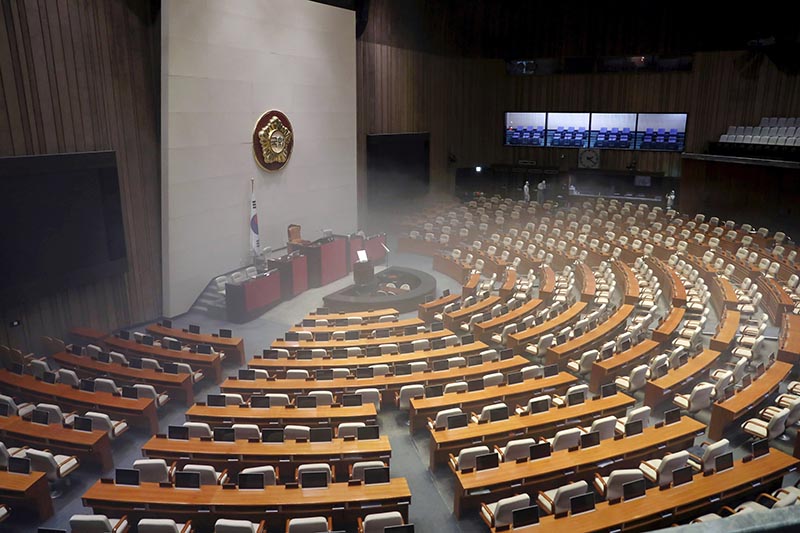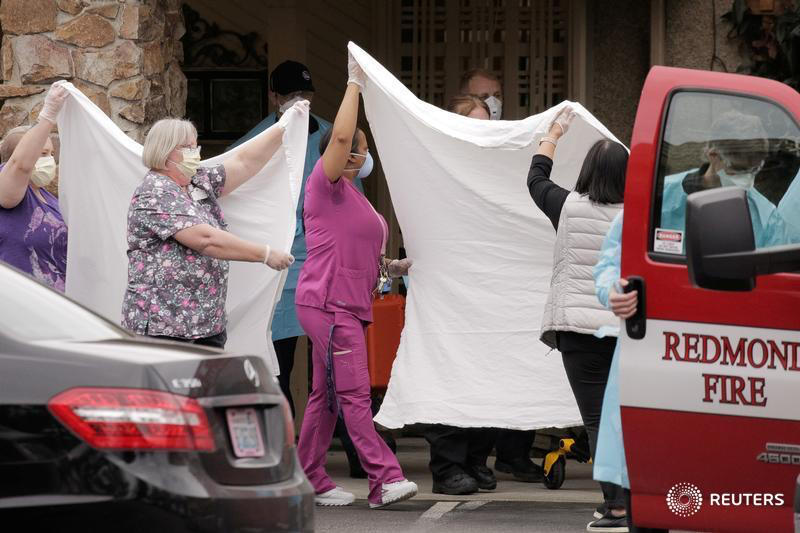Notes
“Bernie’s Warren Problem” Really Media’s Gender Problem

Photo: Toni L. Sandys/The Washington Post. Caption: Sen. Elizabeth Warren (D-Mass.) is brought through the crowd in a march across the Edmund Pettus Bridge to commemorate the 55th anniversary of Bloody Sunday in Selma, Ala.
As Democratic primary candidates dropped out of the race faster than a Bloomberg employee signing an NDA, journalists were eager to cast Super Tuesday as a two-candidate slugfest between Bernie Sanders and Joe Biden. The problem? On the eve of the vote, a few pesky candidates were refusing to yield ground.
The Washington Post continued the media’s onslaught against Elizabeth Warren’s campaign with this photo and its corresponding headline: “Bernie Sanders’s Elizabeth Warren problem.” It’s not unusual for journalists to report on less popular candidates acting as spoilers for frontrunners and nominees. But with only four state contests in the books at the beginning of the week, and despite the boost Warren got following her devastating takedown of Bloomberg in the Nevada debate, treating her as the fly in Bernie Sanders’s soup was premature.
This sort of media coverage often becomes a self-fulfilling prophecy, making it difficult to parse out whether candidates are actually less popular with voters or whether they are less popular because the media says their candidacies aren’t viable.
Tuesday’s vote made clear that Warren’s post-debate boost hasn’t translated into votes. Still, there’s a lot to be learned from a closer look at media framing of her bid for the nomination. As a case in point, the photograph above helps explain why, even with the most diverse presidential primary in history, on the eve of Super Tuesday everyone was talking about the old white guys.
In its original context, the photo is an unremarkable shot of Warren being escorted through the crowd on the Edmund Pettus Bridge in Selma, Alabama. She was there, along with all the major Democratic contenders except Sanders, to commemorate the 55th anniversary of Bloody Sunday. When framed by the headline “Bernie Sanders’s Elizabeth Warren problem,” however, the image calls up another woman presidential contender who many people thought overstayed her welcome in a Democratic primary: Hillary Clinton circa 2008.
Although the actual job of the police officer in the photo is to help Warren navigate the crowd, in this new context he plays the role of party enforcer, ushering her to the periphery. The shot captures a distinctly un-Warrenlike Warren. Rather than purposefully jogging and waving at the crowd, she’s being jostled and directed, with her head bowed and her gaze down. This is not candidate Warren, with her reservoir of principled exuberance perpetually on display as she bounds from one campaign stop to the next. This photo suggests that her time is up.
Black women in the photo also play an important part in this media narrative. In the photo’s original context, their linked arms and clasped hands were a show of solidarity honoring the sacrifices of the victims of Bloody Sunday. In this new context, however, they stand in for the many activists and racial justice organizations who have endorsed Warren. They counteract the efforts of the police officer, attempting to keep her by their sides.
Seen this way, the photo visualizes a chaotic democratic primary season in which media outlets promote the importance of women and people of color even as they undermine their coalitions, question their electability, and escort them out of the limelight.
Using a photo of the Bloody Sunday commemoration to cast Warren as “Bernie’s problem” illustrates the many obstacles women presidential candidates continue to face when it comes to equitable coverage. Bernie Sanders didn’t even bother to show up to honor those Civil Rights activists whose courageous protests were met with violence on Bloody Sunday. Elizabeth Warren did show up, and yet the visual record of her participation is being contorted to fit another story about a woman presidential candidate who overstayed her welcome. There’s a problem here, alright. But it’s not Bernie’s problem.
As Super Tuesday results came in, Warren supporters were quick to point out that the most diverse presidential primary field in history had been winnowed to two aging white men. The women of #BlackTwitter did not hold back:
Whatever happens this election, I will never take it lightly that Elizabeth Ann Warren, yes—a former Republican, yes—a white woman, yes—a lawyer, yes—a Senator, stood with Black women HER ENTIRE RACE.
You can’t keep saying we’re the backbone of the party and not listen to us.
— Ify Ike (@IfyWorks) March 3, 2020
The total routing of Elizabeth Warren last night, the straight up disrespectful dismissal, after all that lady’s hard work — it’s absolutely sexist and patriarchal, and I don’t care to hear any other hot takes than that one. Don’t @ me with no bullshit.
— Brittney Cooper (@ProfessorCrunk) March 4, 2020
Now that candidates and pundits are turning to potential picks for Vice President, keep an eye on how the VP prospects are being covered. Chances are strong that leading contenders are going to be women and people of color. How likely is it, then, that visual depictions will reinforce their subordinate status to the white male nominee? And since Sanders and Biden both are advanced in years, it will be interesting to see if voters’ hesitation around women and people of color as presidential candidates will carry over to the vice presidency.
If that happens, then it’s not just Warren being shuttled to the periphery of U.S. political culture. It’s well over half of the Democratic base.
— Karrin Anderson | @KVAnderson


Reactions
Comments Powered by Disqus